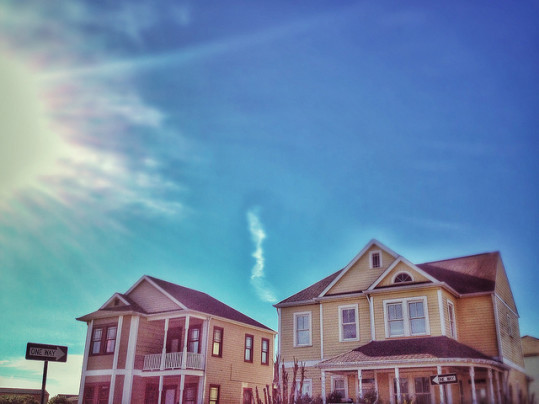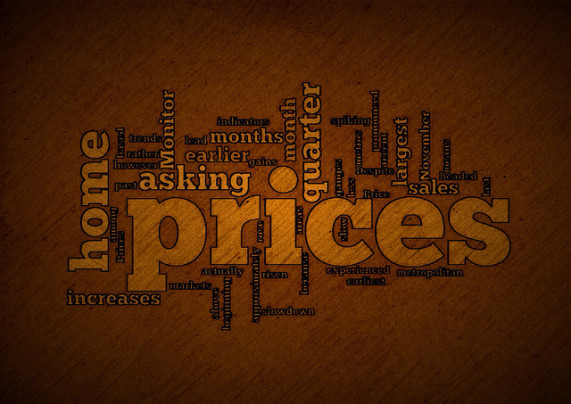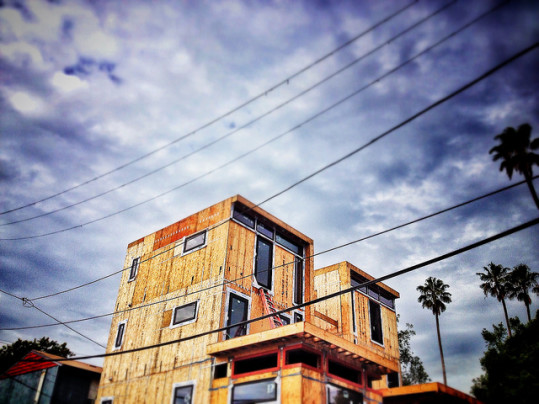New estimates released by the U.S. Census Bureau and the Department of Housing and Urban Development show sales of new single-family homes relatively unchanged in January from December’s figure. In fact, the number of new homes sold dropped just 0.2 percent from the month before and, compared to last January, was up 5.3 percent. The report was a good sign for the housing market, as sales numbers were down only slightly despite the significant declines seen in areas, such as the Northeast, that were hit with severe winter weather during the month. It also beat economists’ expectations which called for a much larger drop in the number of new homes sold. The monthly report found the median sales price of new houses sold in January was $294,300; the average price was $348,300. At the end of the month, there was a 5.4-month supply of new homes available for sale at the current sales pace. A six-month supply is considered a healthy market. More here.
Archive for February 2015
Mortgage Rates Climb Again Last Week
According to the Mortgage Bankers Association’s Weekly Applications Survey, mortgage rates rose again last week with increases seen across all loan categories, including 30-year fixed-rate mortgages with both conforming and jumbo balances, loans backed by the Federal Housing Administration, and 15-year fixed-rate mortgages. Though rates remain historically low, the increase caused a decline in refinance activity, which fell 8 percent from the week before. On the other hand, the seasonally adjusted Purchase Index increased 5 percent, the first increase in many weeks. Overall, as the housing market heads into its busiest season, the outlook remains positive due to a number of encouraging signs in the broader economy and housing market, including improvements in consumer confidence and the job market. The MBA’s weekly survey covers 75 percent of all retail residential mortgages and has been conducted since 1990. Last week’s results contain an adjustment for the President’s Day holiday. More here.
Latest Measure Finds Home Prices Mostly Flat
The S&P / Case-Shiller Home Price Indices are considered the leading measure of U.S. home prices. And according to the most recent release, home prices across the country were mostly flat at the end of last year, on both a monthly and annual basis. In fact, the 20-City Composite index showed a price increase of 4.5 percent over last year, up from 4.3 percent. Month-over-month, the 20-City Composite index found an increase of just 0.1 percent. Still, nine of the included cities posted higher monthly figures than on the previous report. David Blitzer, managing director and chairman of the index committee at S&P Dow Jones Indices, said there is softness in the housing recovery. “While prices and sales of existing homes are close to normal, housing construction and new home sales remain weak,” Blitzer said. “The softness in housing is despite favorable conditions elsewhere in the country: strong job growth, a declining unemployment rate, continued low interest rates and positive consumer confidence.” But, though new home sales and construction have lagged behind other economic and housing indicators, there has been significant improvement and most industry analysts believe this year will see continued gains. More here.
Existing Home Sales Up 3 Percent From Last Year
Though sales of previously owned homes were slow in January, they were higher than last year’s numbers by 3.2 percent, the fourth consecutive month of year-over-year improvement. The estimates, released by the National Association of Realtors, show January home sales up over last year but down 4.9 percent from December. Lawrence Yun, NAR’s chief economist, said the housing market got off to a somewhat disappointing start to begin the year. “January housing data can be volatile because of seasonal influences, but low housing supply and the ongoing rise in home prices above the pace of inflation appeared to slow sales despite interest rates remaining near historic lows,” Yun said. Despite the fact that the number of available homes for sale has been low recently, it was up slightly from the month before. Home prices were also up, the 35th consecutive month of year-over-year price gains. Regionally, sales were down in the Midwest, South, West, and Northeast, with the West and Northeast experiencing the biggest losses. All four regions are still above last year’s numbers, however. More here.
Report Finds Market Ready For Home Buyers
A new analysis from Clear Capital says this year’s housing market is primed for traditional home buyers and 2015 will see a strengthening of what has, until now, been a gradual recovery. According to the report, “2015 has the promise of a transitional year where full buyer momentum in the low and mid tiers reinforces a strong housing recovery.” In other words, price growth among the more affordable tiers of the real estate market means more first-time home buyers should be looking to buy this year, as opposed to recent years where lower priced homes were quickly purchased by investors. The analysis also says that the number of homeowners locked into underwater mortgages has been falling and, with continued price growth, fewer borrowers will be in negative equity, creating a larger percentage of move-up buyers. Improving conditions for first-time and move-up buyers means the housing recovery will be fuller and more sustainable. Following the foreclosure crisis, the top tier of the real estate market bounced back faster than homes in the middle and lower end of the market. This, and an influx of investors capitalizing on lower priced homes, drove the recovery in recent years. Now industry analysts expect a more balanced market and better conditions for traditional home buyers and sellers. More here.
New Home Construction Slips In January
New estimates released by the U.S. Census Bureau and the Department of Housing and Urban Development show both the number of new homes authorized to be built and the number of new homes that began construction fell in January. Building permits, which are a future indicator of new home construction, fell 0.7 percent from the month before, while housing starts were down 2 percent. The drop was largely due to a significant slowing of activity in the Midwest, while regions such as the South and West saw a smaller drop off. Despite the decline, however, analysts remain positive about this year’s housing market. The fact that housing starts were nearly 19 percent higher in January than they were one year earlier is one of the many reasons cited for the optimistic outlook. Improvement in the labor market, historically low mortgage rates, and rising consumer confidence have also contributed to an increasing sense that the residential real estate market will see steady gains this year. More here.
Mortgage Rates Increase, Still Near Historic Lows
According to the Mortgage Bankers Association’s Weekly Applications Survey, mortgage rates increased last week across all loan categories, including 30-year fixed-rate loans with conforming and jumbo balances, mortgages backed by the Federal Housing Administration, and 15-year fixed-rate loans. Naturally, the increase caused a decline in refinance and purchase activity during the week. In fact, refinance demand fell 16 percent from the week before and purchase activity fell 7 percent. Michael Fratantoni, MBA’s chief economist, said mortgage rates hit their highest level since the beginning of the year and, as a result, mortgage application volume dropped. According to Fratantoni, refinance volume fell particularly for larger loans, resulting in an almost $25,000 drop in the average refinance loan size. It was the second consecutive week mortgage rates increased after falling to a 19-month low earlier this month. The MBA’s weekly survey has been conducted since 1990 and covers 75 percent of all retail residential mortgages. More here.







